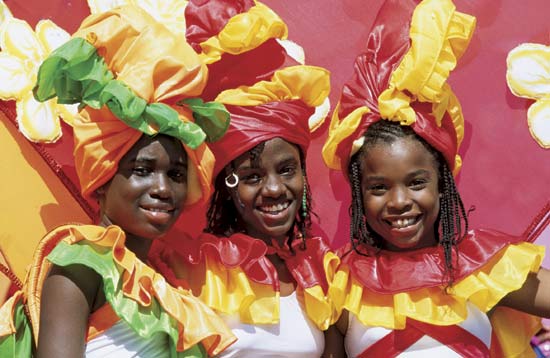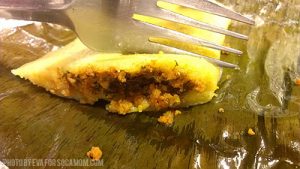 If you live outside of NY, DC, MD, VA, or parts of Canada, it may be hard to keep your kids connected to their Caribbean roots. I grew up in a Caribbean home in America with both parents from Trinidad and Tobago. I knew as I got older that my home was very different from other kids homes. I eventually found out that many of the words used in my home were not even “real” words! We lived in the south where, at the time, there was no real Caribbean community. Most people, when they came to the US, came to DC or NY – and stayed there, so if you live in other parts of the country, connecting to a Caribbean community may be more difficult.
If you live outside of NY, DC, MD, VA, or parts of Canada, it may be hard to keep your kids connected to their Caribbean roots. I grew up in a Caribbean home in America with both parents from Trinidad and Tobago. I knew as I got older that my home was very different from other kids homes. I eventually found out that many of the words used in my home were not even “real” words! We lived in the south where, at the time, there was no real Caribbean community. Most people, when they came to the US, came to DC or NY – and stayed there, so if you live in other parts of the country, connecting to a Caribbean community may be more difficult.
By the time my son was three, he had been to SOMEBODY’S Carnival every year from Atlanta to DC (his “diaper wine” is still a favorite family story). When we moved to DC, I was determined to get him connected. I inquired about CAFÉ, but he was too young, so when he was able to join, I am not sure who was more excited.
Here are a few things that I do as a Caribbean American mom to get and keep my kids connected and aware of their Caribbean heritage.
- We support Caribbean restaurants – and take the kids. There is nothing like my cousins roti, buss up, and curry mango, but if we are away from her, we try to take the kids to try different Caribbean Cuisine.
- We found CAFÉ. There are several steel pan organizations all over the east coast and around the country, but CAFÉ has an educational component with it. There is a competition in Virginia Beach each year on Mother’s Day with many church and school bands. Search Google to see if there is one in your area.
- We play Caribbean music in the car and the house, and we all dance. If you are like me and are very careful about what the kids listen to, there are several clean (and even Christian) versions of soca, reggae, and calypso songs. Go on Rhapsody or Pandora, and make a child friendly mix-tape.
 We get Caribbean treats for the kids. Now if you are watching the kids sugar intake, this may be a tough one. The sugar content is very high in some snacks like tamarind balls and sugar cake. We let the kids have a Chubby soda once in a while, and they are allowed to have half one day, and half another day (yes, I know they are tiny drinks, but I can’t have them running all over like crazy people).
We get Caribbean treats for the kids. Now if you are watching the kids sugar intake, this may be a tough one. The sugar content is very high in some snacks like tamarind balls and sugar cake. We let the kids have a Chubby soda once in a while, and they are allowed to have half one day, and half another day (yes, I know they are tiny drinks, but I can’t have them running all over like crazy people).- We show them where they are from on the map in relation to where they live. Kids love to know their place on the planet, and knowing that they are actually tied to more than one place amazes them.
- We take them to Caribbean events. During Caribbean American Heritage Month, we took them to the Caribbean American Heritage Festival, and to the Film Festival. My youngest said, “Mommy! They all talk like Grandma!”
- We make education a priority. If there is one thing that children of Caribbean descent understand, it is that an education is one of the most important things they can obtain. I try to pass that understanding on to my kids.
- We tell them their story. Our history as a family in America is short. We tell the kids about how their grandparents ended up here, and where the rest of their family is. My husband’s family is American, and they have huge family reunions. We really can fit much of my side of the family that is in America in our living room (and it isn’t a big room), so they wonder why we don’t have more people here for reunions and get togethers. Letting them know that they have the family, they just aren’t here, makes them feel like part of something bigger than just us.
- We cheer for Caribbean sports teams! As a family, soccer is our sport of choice, and the kids coach is from Trinidad, so when he is assigned to watch a professional match, we try to find a Caribbean team to root for!
 We discuss the history that they share with many other cultures and countries. We talk about how Caribbean people came to America by way of Ellis Island, just like people from other countries. We talk to them about the slave and civil rights history they share with African Americans. We try to keep them connected to all parts of their culture, and show them where they fit in the world. When it comes down to it, that is really what kids want – to know who they are, and where they fit. A field trip to New York is a great opportunity to show your children the historical impact of the Caribbean immigrant on American society – especially in business, art, and culture. The image to the right is of Muriel Marjorie Petioni who came with her mother and sister to Ellis Island from Trinidad and Tobago to join their father, Charles, in New York in 1919.
We discuss the history that they share with many other cultures and countries. We talk about how Caribbean people came to America by way of Ellis Island, just like people from other countries. We talk to them about the slave and civil rights history they share with African Americans. We try to keep them connected to all parts of their culture, and show them where they fit in the world. When it comes down to it, that is really what kids want – to know who they are, and where they fit. A field trip to New York is a great opportunity to show your children the historical impact of the Caribbean immigrant on American society – especially in business, art, and culture. The image to the right is of Muriel Marjorie Petioni who came with her mother and sister to Ellis Island from Trinidad and Tobago to join their father, Charles, in New York in 1919.
Have you seen that connecting your Caribbean American child to their culture has made them more confident? Has it made them interested in other cultures? Has it made them more tolerant of other cultures? How do you keep your children connected? Share your experiences in the comments section below.
{loadposition comments}




